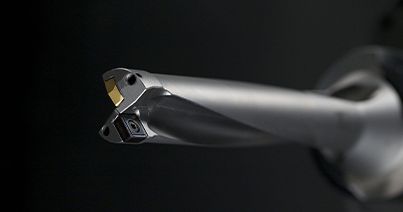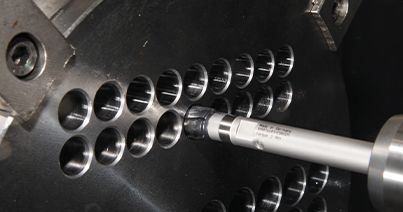Dynamic Milling vs. Conventional Milling
What we’re going to do is a comparison between dynamic milling tool design and tool design for conventional milling. Because flood coolant impairs the visibility of these applications, we’re going to focus on steel. For maximum visibility, we’re machining this block of steel dry. We’re going to machine the same part twice, once with the HARVI™ II five-flute end mill using conventional milling and 1xD and 70% radial engagement, and then once more with KOR5 DS using dynamic milling at 3xD and 15% radial engagement.
In conventional milling, end mills need to run at lower axial engagement and higher radial engagement. This requires machining the workpiece in multiple steps and also requires the tool to run slower.
See how we had to add a second step here.
Now, let’s move on to dynamic milling. With dynamic milling, we can eliminate these extra steps and speed up the process by decreasing the radial engagement and increasing the axial engagement and increasing velocity. Due to the higher axial engagement, the stability of the tool is also much higher.
In this case, we see four active contact points on the KOR5 DS versus the HARVI™ II with only one active contact point. With dynamic milling, we achieve higher feeds and speeds, lower cutting forces, less vibrations, lower temperatures, lower pressure on the tool– leading to higher productivity and higher tool life.
If conventional milling is your only option, the HARVI II, HARVI III, and MaxiMet™ end mills deliver great productivity in aluminum, steel and stainless steel, and titanium.
Learn more about our KOR product line.



